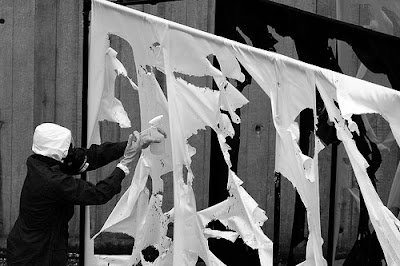#include <Servo.h>
Servo myservo; // declares servo
Servo myservo2;
Servo myservo3;
int pos = 0;
int inputPin1l = 1; // assigns input (button) to pin number
int inputPin1r = 2;
int inputPin2l = 3;
int inputPin2r = 4;
int inputPin3l = 5;
int inputPin3r = 6;
int val1l = 0;
int val1r = 0;
int val2l = 0;
int val2r = 0;
int val3l = 0;
int val3r = 0;
void setup() {
myservo.attach(9); //assigns servo to pin number
myservo2.attach(10);
myservo3.attach(11);
pinMode (inputPin1l, INPUT); // declares button as input
pinMode (inputPin1r, INPUT);
pinMode (inputPin2l, INPUT);
pinMode (inputPin2r, INPUT);
pinMode (inputPin3l, INPUT);
pinMode (inputPin3r, INPUT);
}
void loop() {
val1l = digitalRead(inputPin1l);
val1r = digitalRead(inputPin1r);
val2l = digitalRead(inputPin2l);
val2r = digitalRead(inputPin2r);
val3l = digitalRead(inputPin3l);
val3r = digitalRead(inputPin3r);
if (val1l == LOW) { //if input (button value is 0
for(pos = 0; pos < 180; pos += 1); // this will happen
{
myservo.write(pos);
delay(3);
}
for(pos = 180; pos>=1; pos-=1)
{
myservo.write(pos);
delay(3);
}
}
else if( val1r == LOW ) {
for(pos = 0; pos < 180; pos += 1); // this will happen
{
myservo.write(pos);
delay(3);
}
for(pos = 180; pos>=1; pos-=1)
{
myservo.write(pos);
delay(3);
}
}
else if( val2l == LOW ) {
for(pos = 0; pos < 180; pos += 1); // this will happen
{
myservo2.write(pos);
delay(3);
}
for(pos = 180; pos>=1; pos-=1)
{
myservo2.write(pos);
delay(3);
}
}
else if( val2r == LOW ) {
for(pos = 0; pos < 180; pos += 1); // this will happen
{
myservo2.write(pos);
delay(3);
}
for(pos = 180; pos>=1; pos-=1)
{
myservo2.write(pos);
delay(3);
}
}
else if( val3l == LOW ) {
for(pos = 0; pos < 180; pos += 1); // this will happen
{
myservo2.write(pos);
delay(3);
}
for(pos = 180; pos>=1; pos-=1)
{
myservo2.write(pos);
delay(3);
}
}
else if( val3r == LOW ) {
for(pos = 0; pos < 180; pos += 1); // this will happen
{
myservo3.write(pos);
delay(3);
}
for(pos = 180; pos>=1; pos-=1)
{
myservo3.write(pos);
delay(3);
}
}
}
Tuesday, 30 November 2010
Tuesday, 16 November 2010
Method of Dropping substance with Pipette
Using a servo this system can flick a pipette and drop an acidic substance onto an image.
#include <Servo.h>
Servo myservo; // declares servo
int pos = 0;
int inputPin = 3; // assigns input (button) to pin number
int val = 0;
void setup() {
myservo.attach(2); //assigns servo to pin number
pinMode(inputPin, INPUT); // declares button as input
}
void loop() {
val = digitalRead(inputPin);
if (val == LOW) { //if input (button value is 0
for(pos = 0; pos < 180; pos += 1); // this will happen
{
myservo.write(pos);
delay(3);
}
for(pos = 180; pos>=1; pos-=1)
{
myservo.write(pos);
delay(3);
}
}
else { // else, nothing
}
}
Code:
Servo myservo; // declares servo
int pos = 0;
int inputPin = 3; // assigns input (button) to pin number
int val = 0;
void setup() {
myservo.attach(2); //assigns servo to pin number
pinMode(inputPin, INPUT); // declares button as input
}
void loop() {
val = digitalRead(inputPin);
if (val == LOW) { //if input (button value is 0
for(pos = 0; pos < 180; pos += 1); // this will happen
{
myservo.write(pos);
delay(3);
}
for(pos = 180; pos>=1; pos-=1)
{
myservo.write(pos);
delay(3);
}
}
else { // else, nothing
}
}
Monday, 1 November 2010
Lev Manovich
THE PARADOXES OF DIGITAL PHOTOGRAPHY
"...Even more fetishized is "film look"
itself -- the soft, grainy, and somewhat blurry appearance of
a photographic image which is so different from the harsh and
flat image of a video camera or the too clean, too perfect
image of computer graphics. The traditional photographic
image once represented the inhuman, devilish objectivity of
technological vision. Today, however, it looks so human, so
familiar, so domesticated -- in contrast to the alienating,
still unfamiliar appearance of a computer display with its
1280 by 1024 resolution, 32 bits per pixel, 16 million
colors, and so on. Regardless of what it signifies, any
photographic image also connotes memory and nostalgia,
nostalgia for modernity and the twentieth century, the era of
the pre-digital, pre-post-modern. Regardless of what it
represents, any photographic image today first of all
represents photography..."
In his essay about the 'digital revolution' he speaks about how an old technology is romanticised, how analog photography 'connotes memory and nostalgia' for a past time.Auto-Destructive Art (1959) Manifesto
Gustav Metzger
"Auto-destructive art is primarily a form of public art for industrial societies.
"Auto-destructive art is primarily a form of public art for industrial societies.
Self-destructive painting, sculpture and construction is a total unity of idea, site, form, colour, method, and timing of the disintegrative process.
Auto-destructive art can be created with natural forces, traditional art techniques and technological techniques.
The amplified sound of the auto-destructive process can be an element of the total conception.
The artist may collaborate with scientists, engineers.
Self-destructive art can be machine produced and factory assembled.
Auto-destructive paintings, sculptures and constructions have a life time varying from a few moments to twenty years. When the disintegrative process is complete the work is to be removed from the site and scrapped."
Been looking at Gustav Metzger's work of auto-destructive art. It seems to be about protest and anger. His work spraying acid onto sheets of nylon was in protest to nuclear weapons. Similarly painting hydrochloric acid onto canvas was in protest against art dealers and collectors manipulating art for profit.
I'm interested in this aggression: the process of destroying something that is often perceived to be something that should be beautiful in protest against it.
I'd like to apply these ideas in my project. Destroying a myth that is often perceived to be beautiful and instead of being careful with it, as would normally be the case, destroy it.
Subscribe to:
Comments (Atom)

